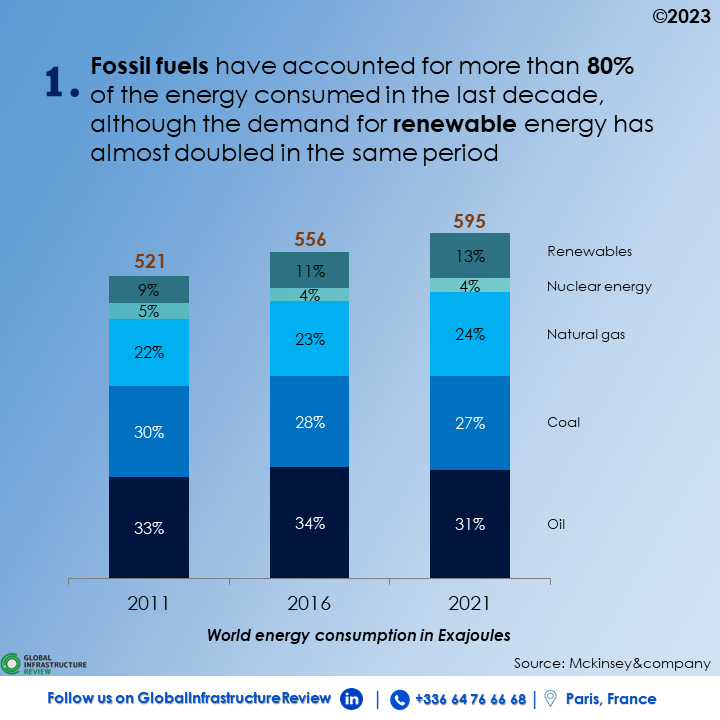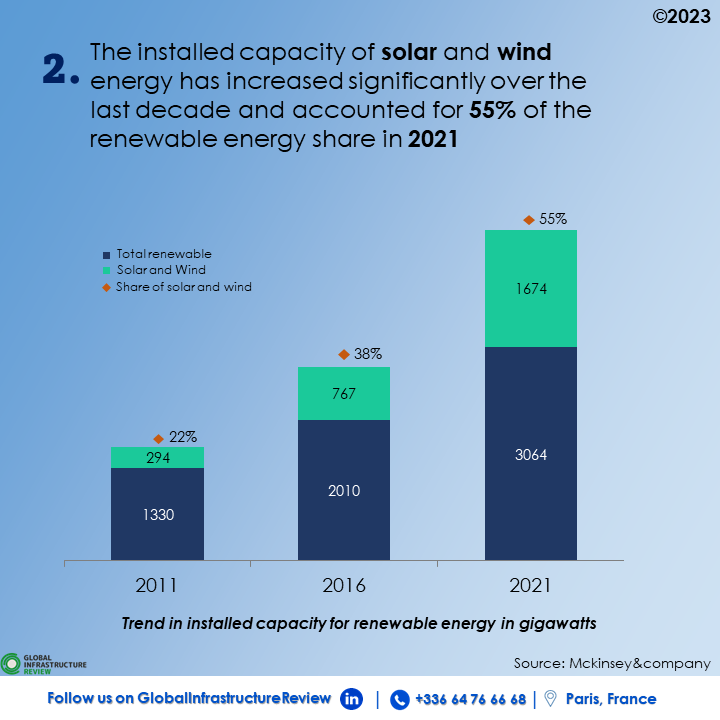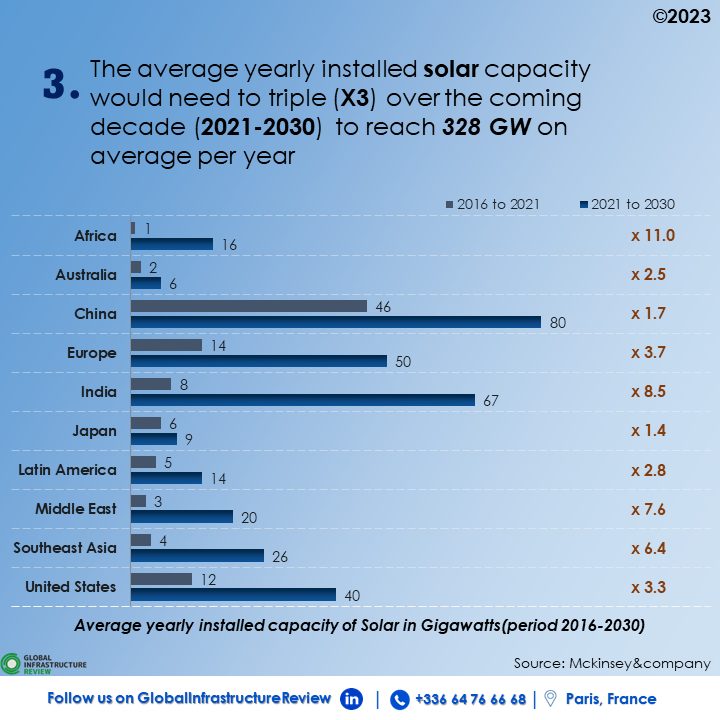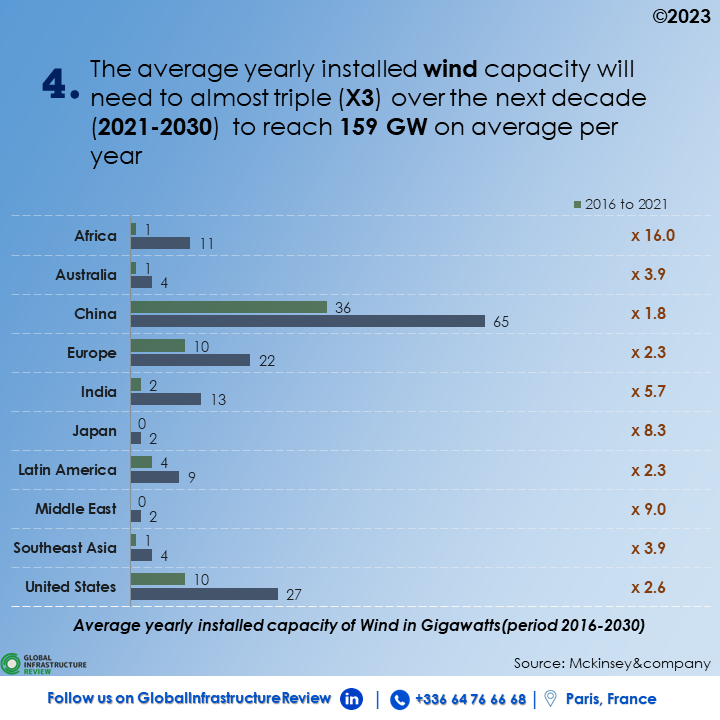Global energy consumption has grown by almost 15% in the last decade with ever increasing energy needs. Although renewable energy production has almost doubled over the period 2011 to 2021, it is important to note that during the same period, fossil fuels still accounted for more than 82% of the world’s energy consumption, of which 31% came from oil, 27% from coal and 24% from gas.
According to Mckinsey&company in the Global Energy Perspective 2022, the median global temperature increase is expected to be about 2.4°C by the end of the century in the “current path” scenario, which is far from the Paris Agreement’s goal of limiting the temperature increase to 1.5 degrees by 2100. To achieve this, GHG emissions must be reduced by 43% by 2030 according to the latest IPCC report.


To close this gap, In the ‘achieved commitments’ scenario defined by the consulting firm (a scenario in which Net-zero commitments are achieved by leading countries through purposeful policies), average annual installed capacity will need to almost triple in solar and wind power.
Solar power will need to increase from 101 GW of average annual installed capacity between 2016 and 2021 to 328 GW over the next decade, while wind power will need to reach 159 GW of average annual installed capacity between 2021 and 2030. For example, Africa will need to increase solar and wind deployment by a factor of more than 10 while the Middle East and India will need to increase their deployment by a factor of 8.


This will be possible through new investments, accelerated electrification in some areas using solar off-grid and minigrids to connect remote areas. Several countries have already launched initiatives in this regard and will need additional funding to take the next step.